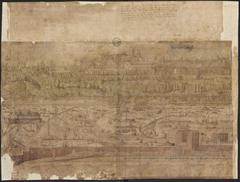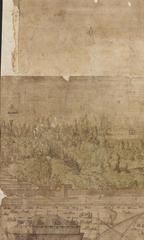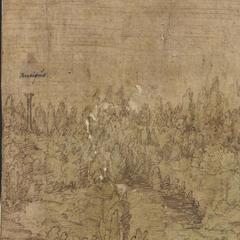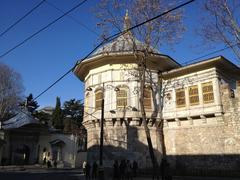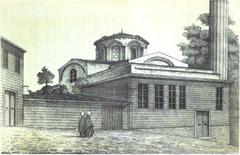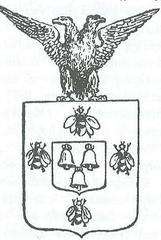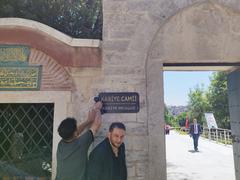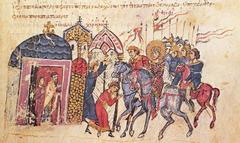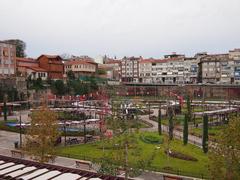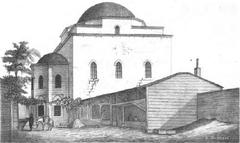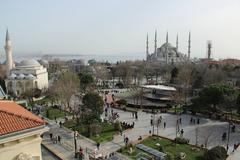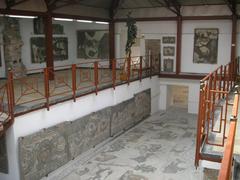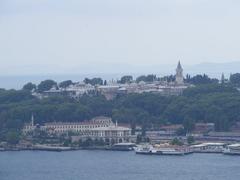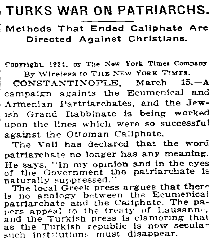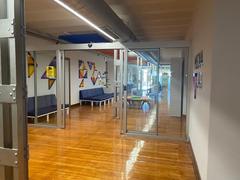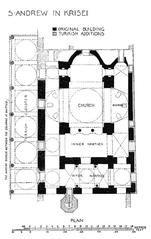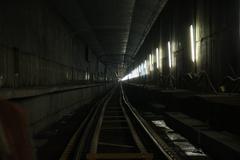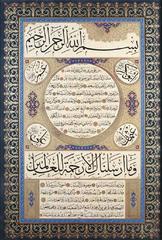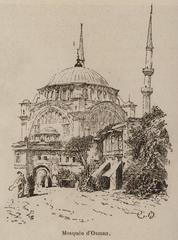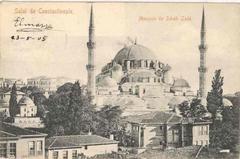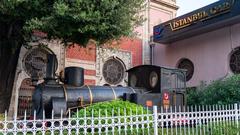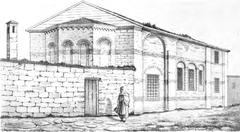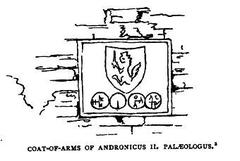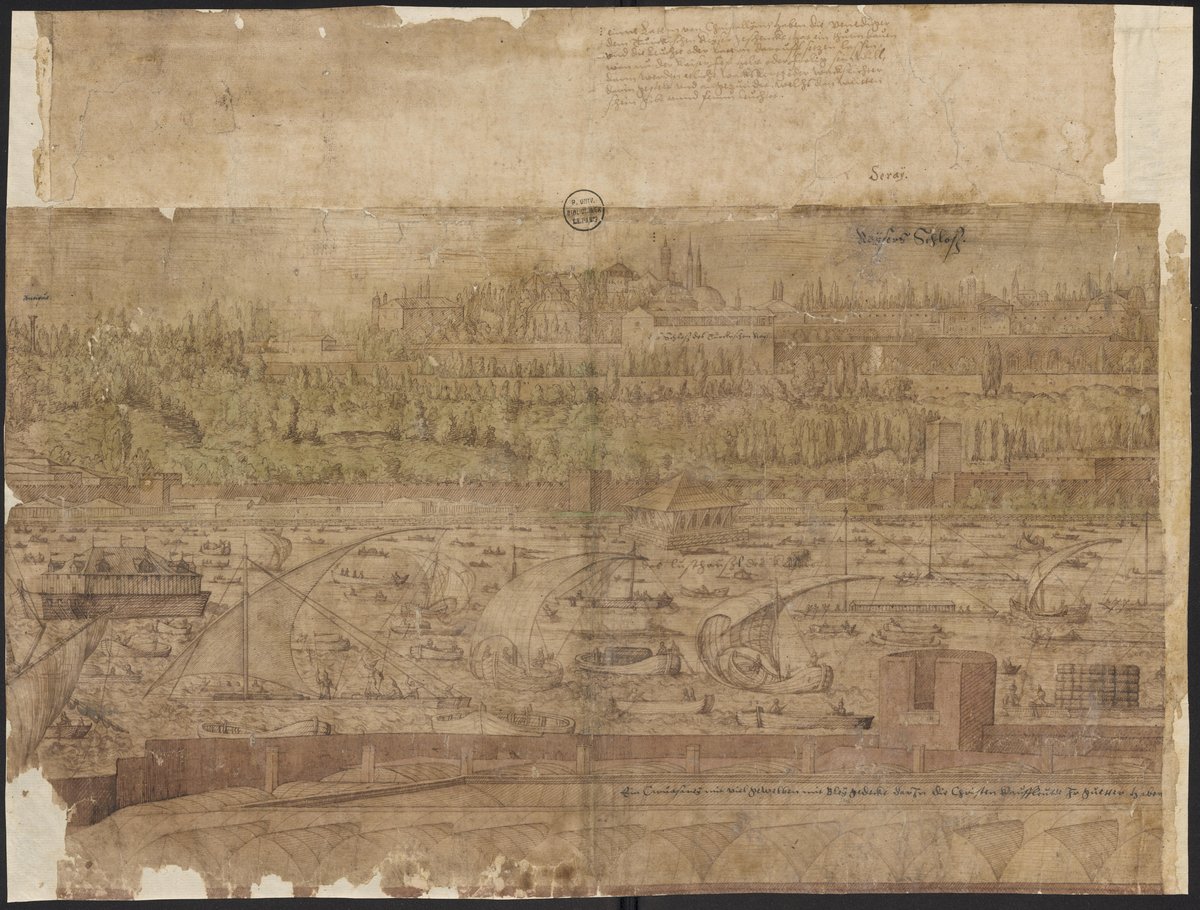
Column of the Goths: Visiting Hours, Tickets, and Fatih Historical Sites Guide
Date: 14/06/2025
Introduction
The Column of the Goths is Istanbul’s oldest surviving Roman monument, standing in the tranquil setting of Gülhane Park within the historic Fatih district. Erected over 1,700 years ago to commemorate a Roman victory over the Goths, this impressive marble column embodies the city’s rich, layered heritage. As both a striking architectural relic and a symbol of Istanbul’s significance as a crossroads of empires, it invites visitors to experience a direct link to the city’s ancient past. This guide provides a comprehensive overview of the monument’s history, architectural features, visiting information, accessibility, nearby attractions, and practical travel tips.
Table of Contents
- Introduction
- Historical Background
- Architectural Features
- Location and Setting
- Visiting the Column of the Goths
- Nearby Attractions
- Guided Tours and Events
- Photographic Tips
- Frequently Asked Questions (FAQ)
- Practical Visitor Tips
- Conclusion and Call to Action
- References
Historical Background
Origins and Construction
The Column of the Goths was likely constructed in the late 3rd or early 4th century CE, making it one of the most ancient monuments not only in Istanbul but in the broader region. Carved from a single block of Proconnesian marble sourced from Marmara Island, the column’s creation demonstrates the skill and ambition of Roman engineers. Its simple yet elegant form is crowned by a Corinthian capital, characteristic of victory columns that celebrated imperial triumphs (Byzantine Military Blog).
Historical Context and Purpose
The Latin inscription at the base—“FORTUNAE REDUCI OB DEVICTOS GOTHOS”—translates as “To Fortuna, who returns, because of the defeat of the Goths.” This dedication links the column to the repulsion of Gothic invasions that threatened the Eastern Roman Empire in the 3rd century, a period marked by frequent wars and shifting borders. While the exact emperor responsible remains debated—candidates include Claudius II Gothicus and Constantine the Great—the column stands as a testament to Roman resilience and military prowess (Istanbul Archaeological Museums).
Symbolism and Significance
As the oldest victory column in Istanbul, the Column of the Goths predates more renowned structures like the Column of Constantine. It symbolizes not only military success but also divine favor, being dedicated to Fortuna, the Roman goddess of fortune. The monument’s survival through Byzantine, Ottoman, and modern Turkish eras amplifies its significance as a symbol of Istanbul’s continuous urban life and imperial heritage (Istanbul Tourism).
Preservation Through the Ages
Remarkably, the Column of the Goths has endured nearly two millennia largely intact. Its location within the imperial gardens of Topkapı Palace (later Gülhane Park) shielded it from destruction and repurposing, a fate that befell many ancient structures in Istanbul. Today, it stands as a rare, unaltered link to the city’s Roman and Byzantine past, accessible to all visitors (Turkish Archaeological News).
Architectural Features
Materials and Structure
The monument is a monolithic shaft of Proconnesian marble, chosen for its durability and luminous appearance. The column stands approximately 18.5 meters (61 feet) high, with the shaft itself measuring about 15 meters. It rests on a sturdy rectangular pedestal, slightly elevated by a three-step base.
Dimensions and Style
The column’s proportions and simple Corinthian capital reflect Roman influence, with a design focused on verticality and visibility. Unlike fluted columns typical of earlier Greek traditions, the shaft is smooth, emphasizing both the stone’s quality and the monument’s imposing presence.
Inscriptions and Decorative Elements
The base features the famous Latin inscription dedicating the monument to Fortuna for the defeat of the Goths. While weathered, this inscription remains a vital clue for historians. The Corinthian capital is modestly decorated, and, according to historical accounts, may once have supported a statue—possibly of Tyche (Fortuna)—though no physical evidence remains (The Byzantine Legacy).
Location and Setting
The Column of the Goths stands in the northeast corner of Gülhane Park, formerly the outer garden of Topkapı Palace, near the Sarayburnu promontory. The park’s lush landscaping and proximity to the Bosphorus create a peaceful atmosphere, ideal for reflection and photography. The monument is conveniently located for those exploring the Sultanahmet area, just steps from major sites like Hagia Sophia and the Istanbul Archaeological Museums (Lovers Istanbul).
Visiting the Column of the Goths
Visiting Hours
- Gülhane Park Hours: Typically open daily from 6:00 AM to 10:00 PM. The column is accessible during these hours.
Tickets and Admission
- Entry: Free of charge. No ticket or reservation is needed to visit the column.
Accessibility
- Paths: Gülhane Park features paved walkways suitable for wheelchairs and strollers, though some areas near the column may be uneven.
- Facilities: Benches, public restrooms, and cafes are available in the park.
Getting There
- Public Transport: The nearest tram stop is Gülhane (T1 line), a short walk from the park entrance.
- On Foot: The column is easily reached from the Sultanahmet district and major attractions like Topkapi Palace and Hagia Sophia.
Travel Tips
- Best Time to Visit: Early morning or late afternoon for optimal lighting and fewer crowds.
- Comfort: Wear comfortable shoes; the park is expansive and ideal for leisurely walks.
- Combine Visits: Plan to see nearby attractions for a richer historical experience.
Nearby Attractions
- Topkapi Palace: The former seat of Ottoman sultans, filled with imperial treasures and exquisite architecture.
- Hagia Sophia: The city’s iconic Byzantine basilica, now a mosque and museum.
- Istanbul Archaeological Museums: Houses artifacts from across Anatolia, Greece, and Rome.
- Bosphorus Promenade: Offers scenic views of the strait and the city skyline.
Guided Tours and Events
While there are no dedicated tours for the column alone, it is frequently included in broader walking tours of Istanbul’s historic peninsula. Check with local tour providers or the Istanbul Tourism website for current offerings.
Photographic Tips
- Lighting: Early morning and late afternoon provide the best natural light.
- Angles: The column’s silhouette is striking against the greenery of Gülhane Park and the distant Bosphorus.
- Seasonal Interest: Spring blooms and autumn foliage offer colorful backgrounds.
Frequently Asked Questions (FAQ)
Q: What are the visiting hours for the Column of the Goths?
A: The column is accessible during Gülhane Park’s opening hours, typically 6:00 AM–10:00 PM.
Q: Is there an entrance fee?
A: No, visiting the column and Gülhane Park is free of charge.
Q: Are guided tours available?
A: Many general Istanbul walking tours include the column, but no exclusive tours are dedicated to it.
Q: Is the site wheelchair accessible?
A: Most park paths are accessible, though some uneven areas may be present near the monument.
Q: Can I take photographs at the column?
A: Yes, photography is allowed and encouraged.
Practical Visitor Tips
- No reservation or ticket required.
- Park is generally safe and monitored; keep personal items secure.
- Public facilities and cafes are available nearby.
- Check the Istanbul Municipality or park website for seasonal opening hour updates.
Conclusion and Call to Action
The Column of the Goths is a unique testament to Istanbul’s ancient Roman and Byzantine past, set within the serene confines of Gülhane Park. Its enduring presence, accessibility, and proximity to Istanbul’s top historical sites make it a must-see for history lovers and casual explorers alike. To enrich your visit, consider joining a historic walking tour, using a reputable guide app, or consulting official sources for the latest updates. For more travel tips and guides on Istanbul’s monuments, download the Audiala app and follow us on social media.
